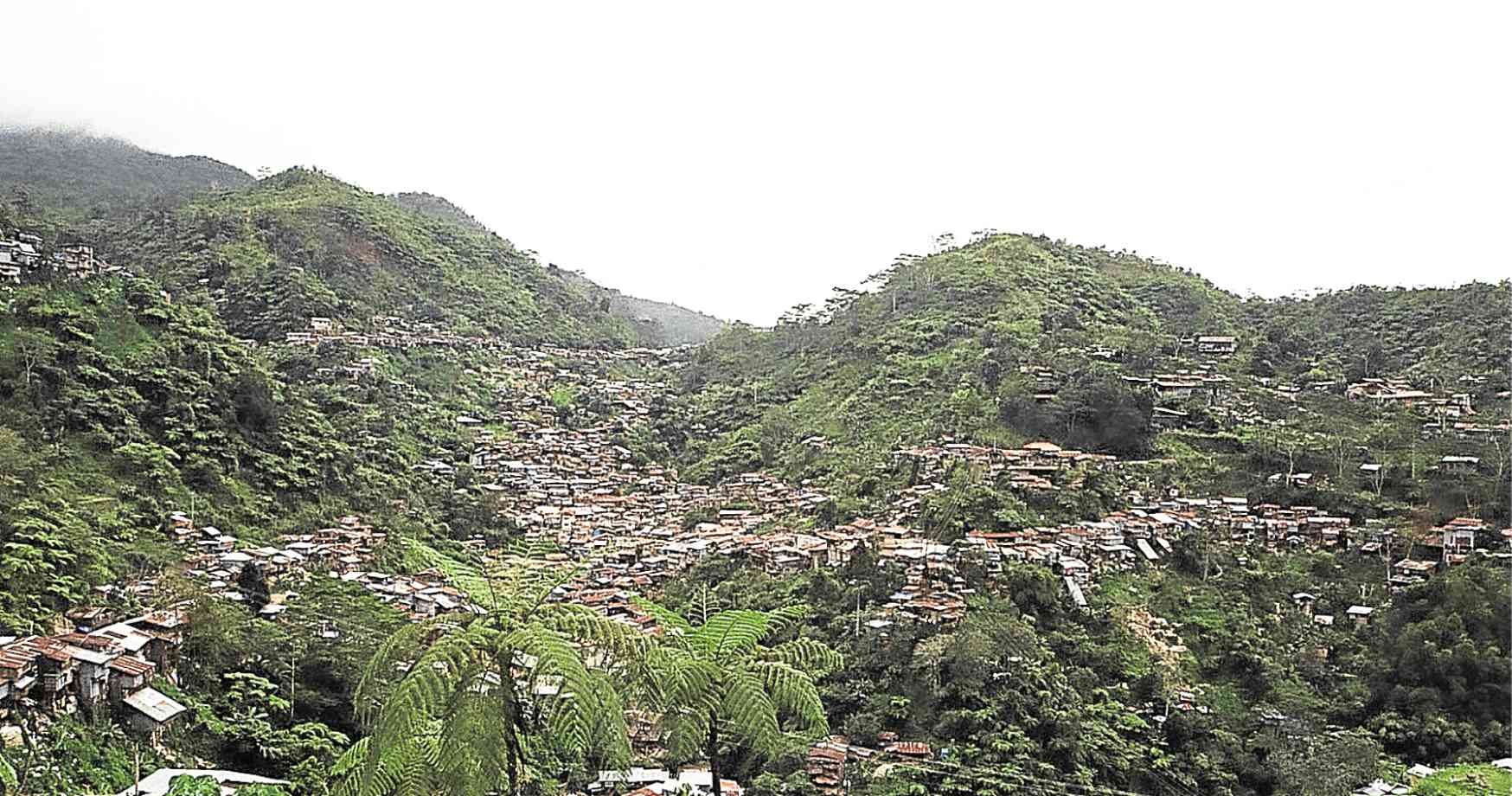
MOUNTAIN OF GOLD Settlers engaged in small-scale mining have been raising their families in a gold-rich community on Mt. Diwalwal in Monkayo town, Compostela Valley, for decades. —DENNIS JAY SANTOS
DAVAO CITY — Environment officials started shutting down gold processing plants in a mining village in Monkayo town, Compostela Valley province, on Monday, a move hailed by local officials as a start to a massive cleanup of a major river system contaminated by mine waste.
At least four ball mill processing plants have been closed by their operators at Barangay Mt. Diwalwal to comply with the order of the Department of Environment and Natural Resources (DENR) to relocate all mineral processing activities to a designated area in a nearby village, according to Chamberlain Babiera, DENR provincial director in Compostela Valley.
The cessation of processing activities on Mt. Diwalwal and the plants’ transfer to Mabatas at Barangay Upper Ulip has been a longtime plan of the government to pave the way for the rehabilitation of Naboc River, said Evelyn Tolentino, officer in charge of the Monkayo municipal environment and natural resources office.
Environment Secretary Roy Cimatu created last year a provincial task force that would enforce and oversee the transfer of all ore-crushing plants to a tailings containment facility in Mabatas that the government had built in 2003.
Former President and now Speaker Gloria Macapagal-Arroyo, through an executive order, created a national task force to oversee the rehabilitation of the 8,000-hectare Mt. Diwalwal Mineral Reservation Area, which covers Mt. Diwalwal village and mining site.
Cracks
Priority for relocation or closure are facilities located in Purok 15, Purok 16 and Purok 17 due to the presence of tension cracks in these areas which may give way and result in landslides following an assessment by the Mines and Geosciences Bureau, Tolentino said.
“They were given an option to either dismantle the processing plants themselves, let the task force do it, or just close their plants and build new ones in Mabatas, particularly those already old and nonoperational,” Tolentino told the Inquirer by telephone.
Mabatas is located 5 kilometers down the 769-ha mining village of 18,000.
Babiera said there were at least 50 ball mills and carbon-in-pulp (CIP) plants in the three purok (subvillages). Mt. Diwalwal hosts a total of 22 CIP plants and 176 ball mills.
He said 46 ore processors in the three purok were given up to March 15 to close their mills so they could finish their current production.
SHUTDOWN Miners secure their machines and equipment as the environment department enforces a closure order on gold processing plants blamed for river pollution on Mt. Diwalwal. —MICHAEL UY/CONTRIBUTOR
Dirty river
Beyond that date, the task force would implement the cease-and-desist order and fine of each operator up to P200,000 per day of operation beyond the agreed period.
Since the discovery of gold on Mt. Diwalwal in 1983, pollution and other environment problems have hounded the village and communities below it as mineral waste laced with mercury and cyanide—chemicals used in squeezing gold from the ore—were thrown in creeks and waterways that empty into Naboc River.
Local officials said the relocation of the gold processing facilities was long overdue, noting that the unregulated proliferation of processing plants on Mt. Diwalwal virtually killed Naboc River.
“It has a positive effect on our town, particularly Barangay Naboc, because it means the start of eradicating or minimizing the concentration of mercury and cyanide contaminating the river,” Tolentino said.
Tests by the United Nations Industrial Development Organization and the Department of Health in early 2000s revealed high mercury contamination on Mt. Diwalwal, which reached the river, some 12 km away.
Contaminated rice, fish
The contamination was also found in rice harvested near Naboc River, and fish and mussels caught there, the study said.
Up to 38 percent of Naboc residents were also found to be “mercury intoxicated” after consuming rice and fish contaminated with the heavy metal.
Babiera said mine waste in Mabatas would be contained in a tailings pond and could no longer pollute downstream.
He said the transfer of the rest of the facilities would begin following a final meeting with operators on March 19.